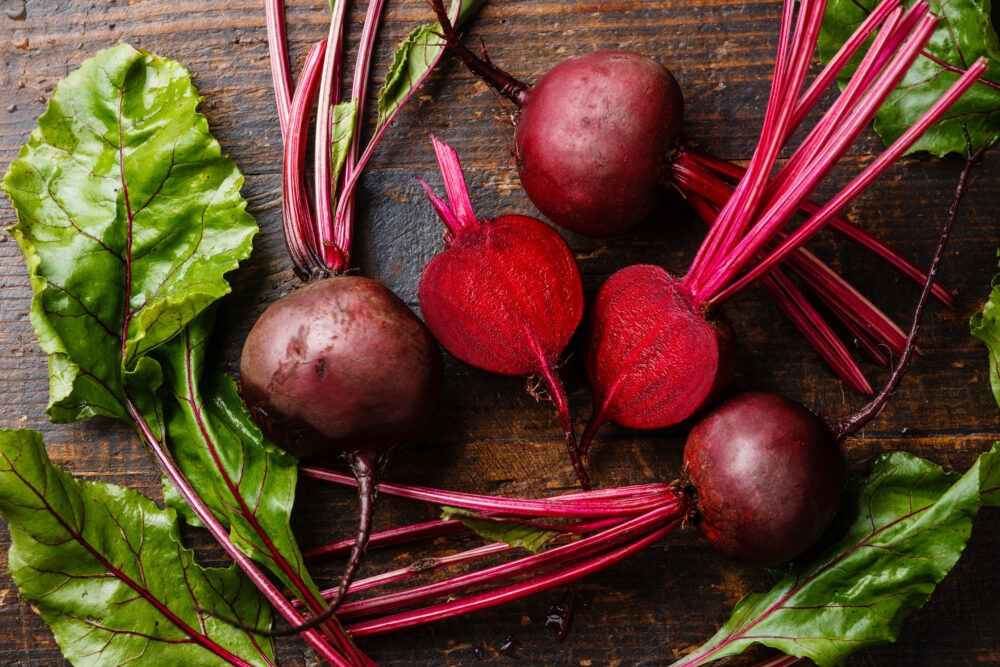Sweet, mellow, and earthy, beets are a versatile winter staple. Use both the beet root and greens to minimize waste.
Optimal Storage
- Do not wash until ready to use.
- Keep in a breathable bag in the high-humidity drawer of the refrigerator.
- Separate green tops from the beets, leaving just 2.5 cm of stem (otherwise the greens will draw moisture away from the beet).
- The green tops can be stored separately in a breathable bag in the high humidity drawer.

Freezing
- Cook beets before freezing. Raw beets tend to turn grainy when frozen.
- Cook beets until fork tender, cool in ice water, rub away peel, dry, slice or cube or purée, and seal into zip-top freezer bags.
- To use, thaw the beets and cook just enough to heat through. Or, blend them into a smoothie.
- If beets seem over mature, freezing can magnify woodiness and is not recommended.
- Beet tops can be blanched and frozen.
Root to Fruit
All parts of the beet are edible; the green leafy tops can be used like chard or kale.
Revival
- Revive limp or tired beets with a soak in cold water.
- Use up extra beets by roasting them. Roasted beets can be turned into hummus, baked into chocolate cake, used as sandwich filling, blended into a pesto, or tossed into a salad.
- Beets can be pickled.
- Beet peels and shriveled beets can be used for making natural dyes—rub your hands with salt to remove any staining.
- Beets can be used to make lip stain and blush.

